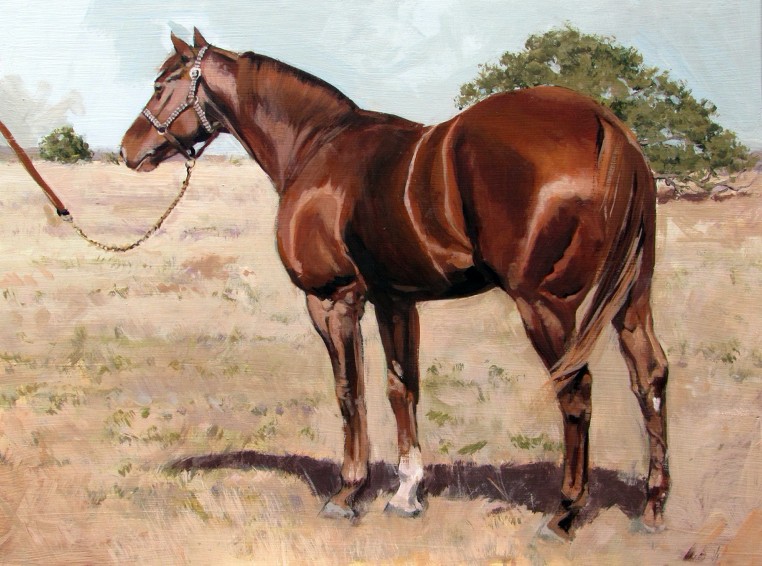Comparing and contrasting artworks is crucial for understanding art history and developing visual literacy. This guide explores fundamental techniques for analyzing art, using examples of horses, figures, sunflowers, and dots across various periods and styles. By understanding elements like composition, color, and technique, you can effectively compare and contrast diverse artworks.
Comparing Horses in Art: From Realism to Abstraction
Equine imagery has fascinated artists for centuries. Comparing Rosa Bonheur’s realistic Relay Hunting (1887) with a contemporary photograph of a horse (Foundation Sire) reveals striking similarities in their lifelike representation. Bonheur’s meticulous study of horse anatomy, even dissecting animals, enabled her to capture precise details.
Relay Hunting by Rosa Bonheur demonstrates anatomical accuracy achieved through detailed study.
Foundation Sire showcases the modern photographic realism achievable today.
This anatomical precision contrasts sharply with the stylized depictions found in prehistoric cave paintings (Lascaux Caves) and Leonardo da Vinci’s Study of Horses. While these works capture the essence of the horse, they prioritize movement and form over meticulous detail.
A horse from Lascaux Caves illustrates early humans’ attempts to capture the animal’s form.
Leonardo da Vinci’s Study of Horses emphasizes movement and form.
Further demonstrating stylistic diversity, Franz Marc’s Blue Horses employs bold colors and abstract forms, showcasing Expressionism’s emotional intensity. This stands in stark contrast to Albrecht Dürer’s detailed engraving, Knight, Death and the Devil, which exemplifies the meticulous detail of Northern Renaissance art.
Comparing Figures: Bridging Centuries Through Form
Comparing Sandro Botticelli’s The Birth of Venus (1486) and Jylian Gustlin’s Rara Avis 19 (2014) reveals surprising connections across vastly different eras. Both feature centralized female figures with elongated limbs and static poses, emerging from water. Despite the five centuries separating them, both works explore themes of birth and emergence.
Botticelli’s The Birth of Venus embodies the idealized beauty of the Renaissance.
However, significant differences exist in their execution. Botticelli’s Renaissance idealism contrasts with Gustlin’s contemporary approach, employing layered acrylics and oils to create a moody, introspective atmosphere. Botticelli’s classical setting differs from Gustlin’s ambiguous landscape, reflecting their respective artistic contexts.
Rara Avis 19 by Jylian Gustlin reflects a modern, introspective approach to figurative art.
Comparing Sunflowers: Exploring Medium and Composition
Vincent van Gogh’s iconic Sunflowers (1887) and an anonymous sunflower quilt (2004) share a common subject but diverge in their artistic approach. Van Gogh’s oil painting utilizes impasto techniques and vibrant yellows to convey the flowers’ vitality. The quilt, crafted from fabric, employs contrasting colors and stylized shapes to create a decorative pattern.
Van Gogh’s Sunflowers exemplifies his expressive use of color and brushwork.
While both works celebrate the sunflower’s beauty, their compositions differ significantly. Van Gogh arranges his flowers in a vase, emphasizing their natural form. The quilt presents sunflowers as individual elements within a patterned design. This comparison highlights how medium and artistic intent shape the final artwork.
The Sunflower Quilt demonstrates a different artistic approach using fabric and pattern.
Comparing Dots: From Pointillism to Immersive Installations
Yayoi Kusama’s polka-dot installations, Flowers and Life is the Heart of a Rainbow, create immersive environments using contrasting colors and repetitive patterns. These large-scale works engulf the viewer in a playful, yet sometimes unsettling, world of dots.
Kusama’s Flowers utilizes polka dots to transform natural forms into immersive experiences.
This approach differs drastically from Georges Seurat’s Pointillist technique in A Sunday Afternoon on the Island of La Grande Jatte. Seurat uses tiny dots of color to create a cohesive image when viewed from a distance. Up close, the individual dots are visible, showcasing the scientific precision of his method.
Life is the Heart of a Rainbow demonstrates Kusama’s creation of immersive environments through the use of polka dots.
Seurat’s A Sunday Afternoon on the Island of La Grande Jatte exemplifies the technique of Pointillism.
Comparing these artists demonstrates how the “dot,” a fundamental artistic element, can be manipulated to achieve vastly different effects, ranging from optical illusions to immersive experiences. By analyzing these diverse examples, we gain a deeper understanding of how artists utilize formal elements to express their unique visions.
